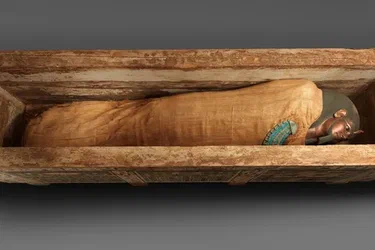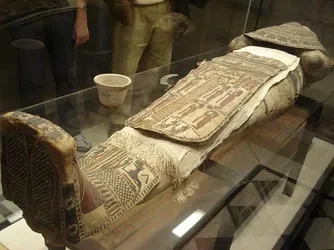
Introduction: Mummification
Mummification stands as one of the most intriguing practices of Ancient Egypt, offering a fascinating glimpse into their beliefs about the afterlife. This comprehensive guide will delve into the intricate steps of mummification, shedding light on the religious rituals and meticulous procedures that were involved. From washing to preservation and final rites, each step held profound significance in ensuring a smooth transition to the afterlife. Read on to uncover the mesmerizing world of mummification operations.
Mummification Operations Steps
I. The Genesis of Mummification

The origins of mummification can be traced back to the earliest burials in Ancient Egypt. Bodies were left to dry naturally in the arid sands of the Sahara, which gradually led to the creation of natural mummies. However, over time, this process evolved into a sacred ritual, spanning over two months and encompassing a series of meticulously planned steps.

II. Purification and Internal Organ Removal
The journey of mummification begins with the purification of the deceased’s body. The body is carefully washed and cleansed to remove any impurities. Following this, internal organs are delicately removed through an incision in the abdomen or bodily orifices. Notably, the heart believed to house the essence of the departed, is left untouched in the thoracic cavity.

III. Guardians of the Organs: Canopic Jars
The extracted organs, excluding the heart, find their resting place in Canopic jars. These containers, crafted from materials like pottery, stone, or wood, were carefully sealed to safeguard the organs. Each jar was associated with a specific deity, underscoring the spiritual significance of this practice.

IV. The Enigmatic Brain Extraction
In a unique and intriguing step, the brain was removed, as it was believed to serve no function in the afterlife. This intricate procedure involved the use of a hook-like instrument, akin to a long crocheting needle, inserted through the nose. Once in the skull, it was deftly manipulated to liquefy the brain tissue, which would then drain out through the nasal passage.

V. Embracing Natron: The Drying Process
After the body has been cleansed and emptied of its organs, it is meticulously packed with natron, a natural salt known for its desiccating properties. This crucial step aids in the removal of moisture from the body’s tissues. Over a span of 40 days, the body gradually dries, losing up to 75% of its original weight.

VI. Restoration and Resemblance
Once the drying process is complete, the temporary packing is removed. Fresh natron, along with linen strips soaked in resin, is introduced into the body cavity to restore its original form. At this stage, the mummy begins to take on the recognizable appearance of the departed, ensuring that they will be readily identified by their ancestors in the afterlife.
VII. Anointing and Adornment

In a deeply reverent step, the mummy is anointed with cedar oil and scented resins, infusing it with sanctity. It is then meticulously wrapped in linen strips, a process akin to swaddling a precious gift. Among these layers, one can find charms, amulets, and personal items, each imbued with ritualistic significance, ensuring the departed’s safe passage into the afterlife.
VIII. Guiding the Departed: Final Rites

As the mummification process nears its conclusion, the body, now adorned and preserved, is placed within a coffin. Here, priests play a crucial role, reciting incantations, prayers, spells, and hymns. These sacred words are designed to safeguard and guide the departed through the perilous journey of the underworld, leading them toward paradise.
Conclusion
Mummification, an ancient Egyptian funerary practice, provides a captivating glimpse into the beliefs and customs of this ancient civilization. From the initial purification to the final rites, each step was meticulously performed, guaranteeing a seamless journey to the afterlife.
This intricate process not only sheds light on an ancient society but also deepens our respect for their profound reverence for existence beyond death. It stands as a testament to the enduring strength of human faith when confronted with mortality.





Comment (0)